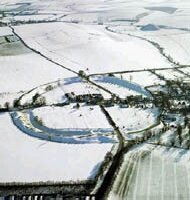Land Managers

Managing Historic Places
Historic places make a crucial contribution to the local identity and distinctiveness of the countryside. Whether you are a farmer, a forester, land agent or farm adviser, or the manager of a landed estate or country park you have a fundamental role in caring for and managing the historic environment in your area.
Farmed land in England includes well over half a million traditional buildings (including some 60,000 listed structures), thousands of miles of traditional boundaries, countless historic features and the great majority of archaeological sites. Our woodlands, wetlands and uplands are also of immense historic importance, containing the best preserved of our archaeological sites and ancient landscapes.
However, the pressures on the historic character of today’s countryside are greater than ever before. As agriculture has intensified and restructured, many historic sites in the countryside have been damaged or destroyed. Traditional farm buildings, historic field boundaries and ancient field patterns have become less relevant to modern farming operations. Many have been lost or neglected and distinctive features, such as parkland and field trees, are in decline.
Recent changes in attitudes to rural land management now provide an unparalleled opportunity to prevent further loss. Conservation of the heritage is increasingly being recognised as an integral part of the drive towards a more sustainable farming industry. Changes in the subsidy regime and in rural development grant-aid programmes now offer important new opportunities to maintain and enhance the historic aspects of the farmed landscape.
Whole Farm Audits and Farm or Estate Plans provide the chance to integrate care of historic features with other environmental objectives, such as the conservation of species and habitats. These documents should be informed by a sound understanding of the nature, condition and potential of the historic dimension of every landholding.
With the right information, land managers can play a vital role in ensuring our historic sites are passed down to future generations. Practical advice on managing these historic places in the countryside can be sought from your local authority and English Heritage regional teams. The HELM project also provides online guidance and policy to assist the decision-making process.
Guidance and policy documents are available on this website when accessed through the five topic buttons on the top left: Regeneration & Design, Understanding & Recording, Liveability, Managing & Protecting and Funding. English Heritage documents can also be searched and downloaded as a PDF by using the Guidance Library.
The HELM website has a list of guidance produced by local authorities, amenity groups and relevant bodies which can also be found using the Guidance Library. Case Studies may be searched for examples of good practice across the country.
HELM offers training for councillors and officers in local authorities and government agencies.
